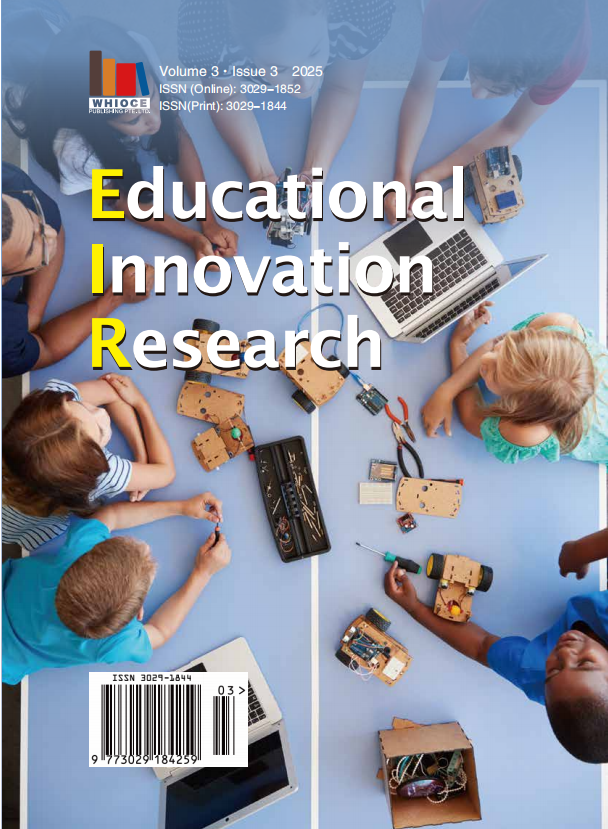An Analysis of Conceptual Metaphors in Harry Potter and the Philosophy’s Stone from the Perspective of Cognitive Linguistics
DOI:
https://doi.org/10.18063/eir.v3i3.841Keywords:
Conceptual metaphor, Critical metaphor analysis, Metaphorical functions, Novel, Harry potterAbstract
Metaphor is not only a rhetorical device but also can be seen as a cognitive tool and a kind of thinking method. Literature, especially novels, often uses plenty of conceptual metaphors to explain abstract concepts and phenomena. This paper takes the first volume of the Harry Potter series, “Harry Potter and the Philosopher’s Stone,” as its corpus, conducting a qualitative and quantitative analysis of the conceptual metaphors within it, which is based on the theory of Critical Metaphor Analysis. The aim is to explore the connotative meaning embedded in the conceptual metaphors and systematically summarize the functions of the conceptual metaphors of novels.
References
Lakoff G, Johnson M, 1980, Metaphors We Live By. University of Chicago Press, Chicago.
Hawkes T, 1975, The Theater and the Dream: From Metaphor to Form in Renaissance Drama. Renaissance Quarterly, 1975(1): 1–3.
Thompson S, 1996, Metaphor: Implications and Applications. Lawrence Erlbaum Associates Publishers, New Jersey.
Charteris-Black J, 2004, Critical Metaphor Analysis. Palgrave Macmillan UK, London, 243–253.
Nabifar N, Kazemzadeh H, 2012, Types of Grammatical Metaphors in Harry Potter and the Prisoner of Azkaban. Journal of Applied Linguistics, 5(10): 192–219.
Gibbs R, 2011, Evaluating Conceptual Metaphor Theory. Discourse Processes, 48(8): 529–562.
Ungerer F, 2006, An Introduction to Cognitive Linguistics. Foreign Language Teaching and Research Press, Beijing.
Mehlenbacher A, Harris R, 2017, A Figurative Mind: Gertrude Buck’s The Metaphor as a Nexus in Cognitive Metaphor Theory. Rhetorica: A Journal of the History of Rhetoric, 35(1): 75–109.
Ortony A, Reynolds R, Arter J, 1978, Metaphor: Theoretical and Empirical Research. Psychological Bulletin, 85(5): 919.
Gibbs R, 2006, Metaphor Interpretation as Embodied Simulation. Mind & Language, 21(3): 434–458.
Steen G J, 2011, The Contemporary Theory of Metaphor—Now New and Improved! Review of Cognitive Linguistics, 9(1): 26–64.
Cian L, 2017, Verticality and Conceptual Metaphors: A Systematic Review. Journal of the Association for Consumer Research, 2(4): 444–459.
Kheslati H, Alavi Moghaddam M, Firozi Moghaddam M, 2022, An Analysis of the Structural Conceptual Metaphor of. Literary Text Research, 26(92): 253–283.
Baranyiné J, 2018, Orientational Metaphors. Nature, Metaphor, Culture: Cultural Conceptualizations in Hungarian Folksongs, Springer Nature, Singapore, 115–131.
Dreyfus B, Gupta A, Redish E, 2018, Applying Conceptual Blending to Model Coordinated Use of Multiple Ontological Metaphors. Conceptual Metaphor and Embodied Cognition in Science Learning, Routledge, 80–106.
Charteris-Black J, 2004, Critical Metaphor Analysis. Palgrave Macmillan UK, London, 243–253.
Flusberg S, Matlock T, Thibodeau P, 2018, War Metaphors in Public Discourse. Metaphor and Symbol, 33(1): 1–18.
Semino E, Demjén Z, Demmen J, et al, 2017, The Online Use of Violence and Journey Metaphors by Patients with Cancer, as Compared with Health Professionals: A Mixed Methods Study. BMJ Supportive & Palliative Care, 7(1): 60–66.
Caballero R, 2003, Metaphor and Genre: The Presence and Role of Metaphor in the Building Review. Applied Linguistics, 24(2): 145–167.
Esenova O, 2007, Plant Metaphors for the Expression of Emotions in the English Language. Beyond Philology, 5: 7–21.
He G, 2011, A Comparative Study of Color Metaphors in English and Chinese. Theory & Practice in Language Studies (TPLS), 1(12): 1804–1808.
Żołnowska I, 2011, Weather as the Source Domain for Metaphorical Expressions. AVANT. Pismo Awangardy Filozoficzno-Naukowej, 2011(1): 165–179.
Mujagić M, 2018, Dangerous Waters Metaphor in News Discourse on Refugee Crisis. Metaphorik.de, 28: 99–131.
Davies G, Chun R, Silva R, et al, 2001, The Personification Metaphor as a Measurement Approach for Corporate Reputation. Corporate Reputation Review, 4: 113–127.
Kovalenko L, Martynyuk A, 2018, English Container Metaphors of Emotions in Ukrainian Translations. Advanced Education, 5(10): 190–197.
Lakoff G, Johnson M, 2020, Conceptual Metaphor in Everyday Language. Shaping Entrepreneurship Research, Routledge, 475–504.
Gibbs R, 2011, Taking Metaphor Out of Our Heads and Putting It into the Cultural World. Metaphor in Cognitive Linguistics: Selected Papers from the 5th International Cognitive Linguistics Conference, Amsterdam, 1997, John Benjamins Publishing Company, 145–166.

